Some say all roads lead to Scranton and I have to say that
is true, at least in my case. My great-grandparents on my fathers's side lived
in Taylor and my great-grandpa Ignatz worked at Moffat Coal Company in the same town. I visited a few years ago and took the mine tour, imagining myself walking in
Ignatz's footsteps.
Just this month, I returned again to the area to see what else
Lackawanna County had in store for visitors. This time I was able to explore a
train-station-turned-hotel, a Masonic lodge that was built in the 1920s, one of
the oldest museums in Northeastern Pennsylvania, a small town known for a
special kind of pizza, several lovely wineries and a small, but special museum,
where I learned quite a bit about a man who was famous for his death-defying
acts--the one and only Harry Houdini!
Impressive Architecture
 |
| The Lackawanna Train Station is now a Radisson. |
My husband and I booked a room at the Radisson located at
700 Lackawanna Avenue across the street from the local Visitor's Center. The striking structure, which became the jewel of Scranton, was conjured into existance by William Hanes Truesdale, President of the Delaware, Lackawanna and Western Railroad, who, in 1899, felt that it was time for the brick station to be replaced by something much grander. A competition was held and architect Kenneth Murchison was selected for the job. The New York architect was already known for train station design, having drawn up plans for terminals at Buffalo, Baltimore and Hoboken. Ground was broken in 1906 and the imposing structure made headlines as the one of the "most beautiful stations in the nation."
 |
| Shots of the striking marble lobby. |
 |
| The barrel-vaulted Tiffany ceiling and siena marble are features of the Radisson lobby. |
The last train left the station in 1970 and interest in the building waned until the early 1980s when it was eyed for redevelopment. A mere $13 million got the ball rolling. Today, it operates as a Radisson that impresses guests the minute they walk through the door with siena marble walls, a two-and-a-half story lobby, a terazzo-tiled floor and a barrel-vaulted Tiffany stained glass ceiling.
To view another example of architectural excellence, we headed on over to the Scranton Cultural Center at the Masonic Temple located at 420 Washington Avenue. The Masonic Temple and Scottish-Rite Cathedral was inaugurated in 1930 when the first meeting was held in the building. Today its mission is to "rejuvenate a national architectural treasure as a regional center for the arts, education and community activity that is appealing to all," according to their website.
 |
| Rooms where the Masons meet. |
 |
| Books hide cleverly behind wood panels. |
The Cultural Center is huge--at 180,000 square feet. It houses two theatres, meeting rooms, a grand ballroom and other rooms and is the work of architect Raymond Hood. Hood was famous for several New York structures, including the American Radiator Building, the Daily News Building and the RCA Building, now known as The Comcast building.
 |
| Beautiful ceilings are located throughout the building. "To the Glory of the Great Architect of the Universe" is etched in marble. |
The building has seen its share of weddings over the years, along with national tours of Broadway musicals and concerts featuring such diverse acts as Rob Zombie, Frank Sinatra, Barry Manilow and Britney Spears. And, of course, it continues to serve as the center of Masonic activity within the region.
The interior is a sight to behold, with gilded coffered ceilings, marble for miles, stained glass windows, ornate woodwork and stunning archways. It's another Scranton jewel that never fails to impress.
 |
| Marble for miles and stunning archways never fail to impress. |
The lower level features dressing rooms for touring acts and shows, many of whom have festooned the walls with their signatures, logos and more. As you see, the casts of some the shows can get quite creative and elaborate when making their mark on history.
 |
| Acts and actors add their mark to the walls on the lower level of the cultural center. |
This gem of a building isn't without its complications, however. Alexa Peregrim, Sales Manager, Lackawanna County Visitors Bureau, said that the non-profit center is undergoing a several phased, multi-million dollar restoration. "The problem is that we have to do it in increments as grant money comes in," she said. On the roster for the future is restoration work on the theater walls and ceiling, new stage lighting and sound reinforcement systems, replacement of the 75-year-old stage floor, updated dressing rooms and more so that this special place can continue to be used as a hub for the community to enjoy for years to come.
Lift a Glass to the WineriesA trip to Lackawanna isn't complete without experiencing the wineries of the region. The Lackawanna County Wine Trail takes guests from Old Forge, to Scranton, Blakely, Scott Township and Jermyn.
 |
| The RiverView Winery view overlooking the river. |
Our first stop was in Jermyn at the RiverView Winery, situated next to the Lackawanna Heritage Trail. This winery has nature to thank for providing guests with a beautiful river backdrop with which to enjoy their favorite vintage of varietal, whether it be Zinfindel, Chardonney, Gewurztraminer, or Moscato. RiverView also carries a variety of fruit wines, like mango, blueberry, pineapple and even caramel apple.
The next stop was the Case Quattro Winery in Peckville where guests can enjoy occasional live entertainment with their wine of choice. Case Quattro also offers foods like fig flatbread, homemade pizza and meatball sliders, to pair with their wines.
 |
| Case Quattro also features live entertainment. |
The
Capra Collina Winery in Blakely was the third stop. Capra Collina offers a wide variety of artesinal wines, from fruit wines, to dry reds and whites. Private tastings can be arranged for up to 60 people and the winery also offers a party room to rent.
 |
| Capra Collina offers public and private tastings. |
Our final stop was at the
Mucciolo Family Wines shop in Old Forge. Mucciolo offers a variety of red, white and fruit wines, along with light fare like charcuterie, flatbreads and more. If you'd rather a cocktail, Mucciolo Family Wines has you covered there too. Try the Lavender Wisp; you'll thank me later.
To have a look at the complete wine trail and the areas it encompasses, you can click on this
link where you'll find the brochure.
 |
| Mucciolo's Tasting Rooms |
Before leaving Old Forge, we stopped for some candy at Bella Faccia's Personalized Chocolates and Gifts. I highly recommend the peanut butter meltaways and am still steamed that I didn't buy more.
 |
| A stop at Bella Faccia's in Old Forge is a must. |
A Different Kind of Pizza
Old Forge touts itself as the "Pizza Capital of the World," and if you've never tried it, it's a bit different, cooked in a rectagular pan and served in "cuts."
 |
| Revello's Pizza dates back to 1967. |
 |
| Two "cuts" of Old Forge White Pizza. |
If you're watching your carb intake, beware. There is temptation around every corner--literally. Lackawanna County touts a whopping 160 pizza parlors! Pictured here is
Revello's Pizza, which dates back to 1967 and was formerly named Pelosi's. If you'd like to give their pizza a try, visit their website; they ship.
Pizza is not only delicious, but an affordable option, especially for families, so keep this in mind when visiting Lackawanna County. You can plan your vacation around the
Pizza Trail, which takes pizza lovers to 62 pizzerias located in Lackawanna County towns like Moosic, Old Forge, Scranton, Dunmore and beyond.
Thank You Mr. Everhart
 |
| Dr. Everhart depicted with a bird in one hand and an Audubon book in the other. |
In 1905, Dr. Isaiah Everhart, a Civil War medic, Scranton physician and amateur ornithologist, specified in his will that his money would fund a museum to be built in Scranton's
Nay Aug Park as part of the "City Beautiful" movement. The museum opened its doors in 1908, making it the ninth museum in the state of Pennsylvania at the time. Everhart's interest in our feathered friends may have inspired him to open the museum because of his large collection of taxidermied birds and other mounted animals.
 |
| Roseate Spoonbill |
 |
| Pileated woodpecker. |
 |
| Golden Eagle |
Today, Everhart is the largest public museum in Northeastern Pa and features two floors of exhibits. Many specimens are showcased in the Fossil Gallery, the Rocks & Mineral Gallery and the Bird Gallery, which includes plants, mammals, reptiles and amphibian specimens, in addition to a collection of taxidermied birds mentioned earlier. Floor two contains a collection of fine art celebrating the artistic history of Northeastern Pennsylvania through works by both famous painters and sculpters and unknown folk artists. Dorflinger glass, located in White Mills, Pa, is also represented through a collection of glassware, as are landscapes of the region painted by American Impressionast
John Williard Raught (1857-1931).
 |
| Primitive folk art used for a boot ad. |
 |
| "Scranton Looking North" by John Williard Raught. |
 |
| "Take Out," by Scranton native Hope Horn, (1920-2001) Oil on Canvas |
The Everhart Museum is open Thursday through Sunday. Admission is $5. Seniors 60+ and students admitted for $3. Children age 12 and under are free, along with military members and their families.
Learn More about the World-Famous Harry Houdini
The Houdini Museum, located at 1433 N. Main Avenue in Scranton, is a great way to enjoy a family outing, while witnessing a fabulous magic show and learning more about the legendary escape artist Harry Houdini. And who better to learn from than two individuals who are celebrities in their own right:
Dorothy Dietrich and
Dick Brookz.
 |
| Dietrich and Brookz pose at Houdini's gravesite. |
Dorothy and Dick manage the non-profit museum that was established in 1974 and are dedicated to all things Houdini. Visitors are treated to a two-hour extravaganza of entertainment that includes a film, a guided tour and a one-hour magic show performed by the couple, who have appeared on HBO, Mysteries at the Museum, TLC, and the History Channel. Dietrich is also known as the only woman to do the "bullet catch" stunt, by catching a 22-caliber bullet in her mouth--which is something even the great Houdini refused to do. She is also known for being the first female to escape from a strait jacket while suspended hundreds of feet in the air from a burning rope!

Dietrich is often called "The female Houdini" and is a font of knowledge when it comes to her favorite magician. She was so inspired by Houdini's story as a youngster and how he fled from home, that she, too, ran away (to New York) to pursue her passion for performing magic, which was discouraged every step of the way. Instead of becoming disheartened, she perservered, despite agents warnings that there wasn't a market to watch females perform magic, that is, unless she agreed to strip while doing it. Dietrich ignored the naysayers, stuck to her principals and made a name for herself in the magic world, while breaking another glass ceiling. She created an act where she did more tricks in three minutes than most magicians do in a half hour. Assisted by Brookz, she starred in the HBO special, World's Greatest Escapes, hosted by Tony Curtis, who played Houdini in the Paramount Pictures film "Houdini."
Dietrich's passion shines through as she points out Houdini artifacts and takes questions from the audience about the famous magician. Her eyes light up when she recounts a story about a well-attended seance where she tried to contact Houdini, showing a printing block that bears his likeness and how it mysteriously flipped over as she was making the attempt. (You can see it on the museum website.)
Because of her passion for the magician, Dorothy was also instrumental in ensuring that the public had access to what is considered one of Houdini's greatest films--one that was lost for 96 years. Thanks to the couple, The Grim Game can now be accessed on the museum's website. Feel free to ask her about it when you visit. Dorothy and Dick have stories galore!
You can also purchase a game that the couple devised so that kids can learn more about the famous escape artist. Called Houdini-opoly, it's available at their museum and looks to be great fun, while also serving as a learning experience. The game can be ordered
here.
 |
| Dorothy and Dick created Houdini-Opoly, an educational game, complete with trivia on the world-reknown escapeologist and his associates. |
To learn more about the museum and how and when you can visit, please click
here where it's all explained.
I hope these few suggestions inspire you to take a roadtrip to the Lackawanna County area, where there's a little something for everyone.









































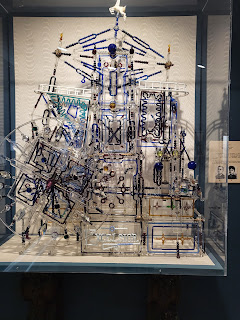

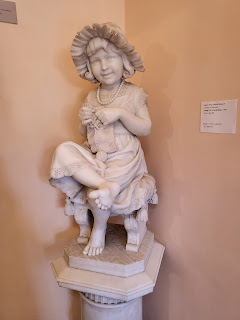








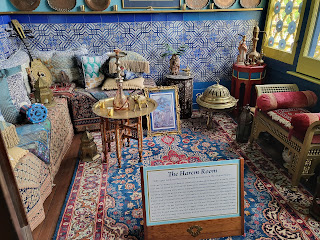



.jpg)





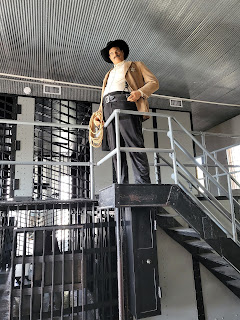





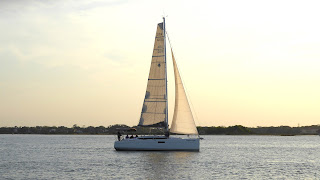



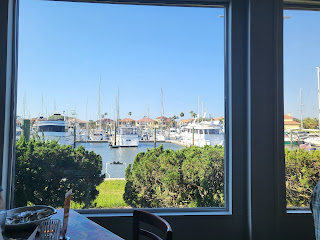
.jpeg)
.jpg)